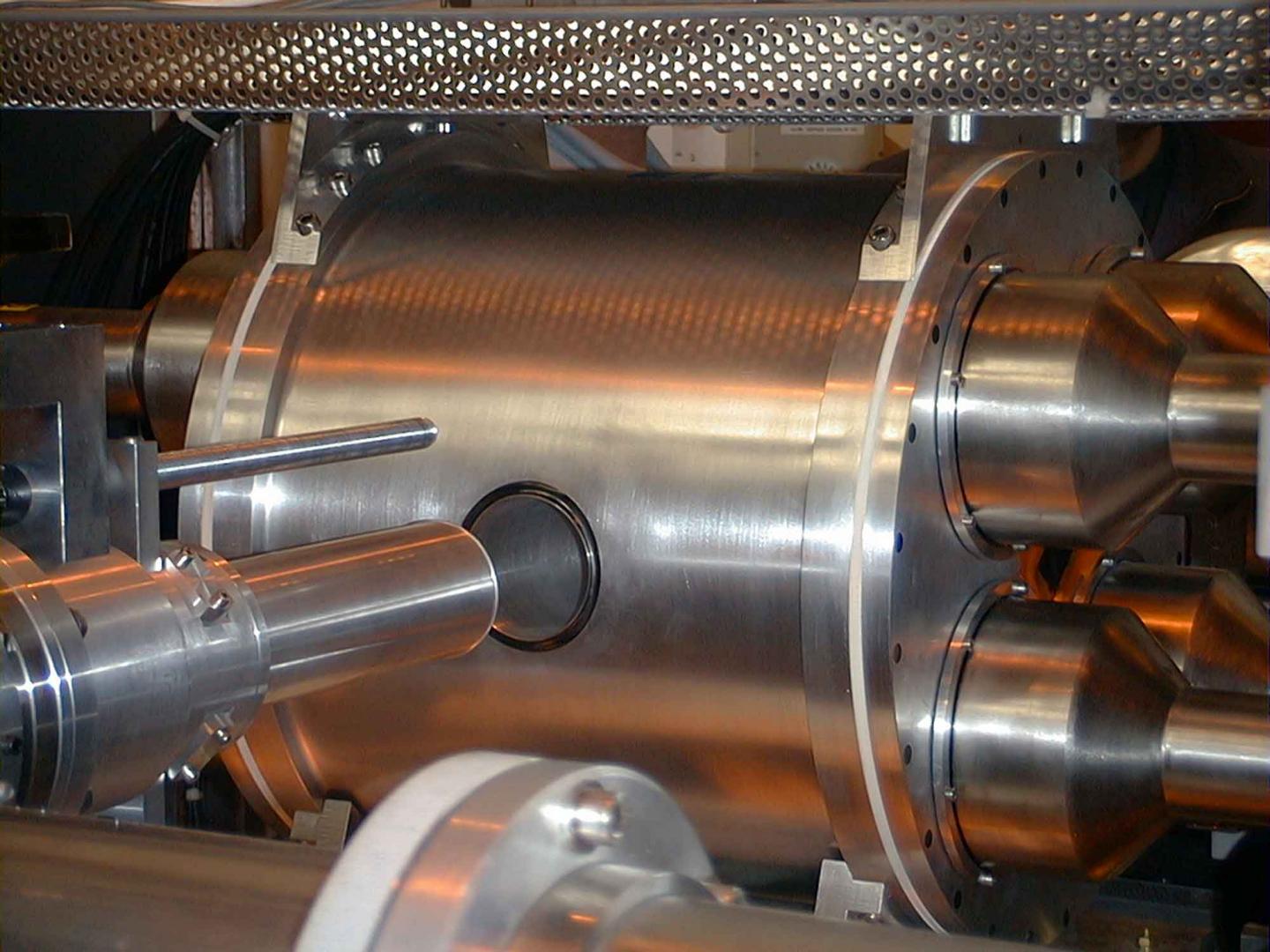
Lucrecia is a Total Absorption gamma Spectrometer (TAS) located at the ISOLDE hall. It has been designed to measure feeding in beta decay through the detection of the gamma cascades following the decay. The b-feeding is one of the main ingredients in the calculation of the b-strength function, and is thus an essential element in the proper estimation of the B(GT) or B(F). The use of the TAS technique is an alternative to high resolution gamma spectroscopy based on Ge detectors, which is affected by systematic errors due to the “Pandemonium effect” particularly for large Q-values.
The spectrometer consists of a large cylindrical single crystal of NaI(Tl), 38 cm x 38 cm, covering a solid angle of 4p, as shown in the figure. The light coming from the scintillator material is collected by eight 5 inch coupled photomultiplier (PMT) tubes. The crystal has a transverse hole (7.5 cm in diameter) which allows the beam pipe to enter up to the centre of the crystal from one side and various ancillary detectors to be placed close to the position of the radioactive source on the other side for the detection of X-rays (to select the EC decay) and positrons/electrons (to select β-decay). This geometry allows the implantation of the radioactive source directly in the middle of the spectrometer and hence the measurement of the beta decay of radioactive species with very short half-lives.
